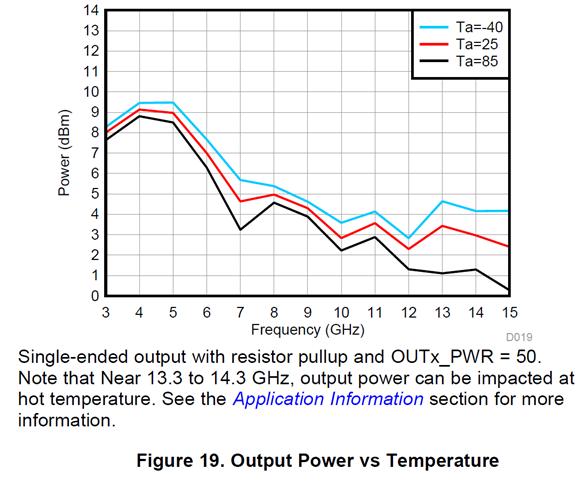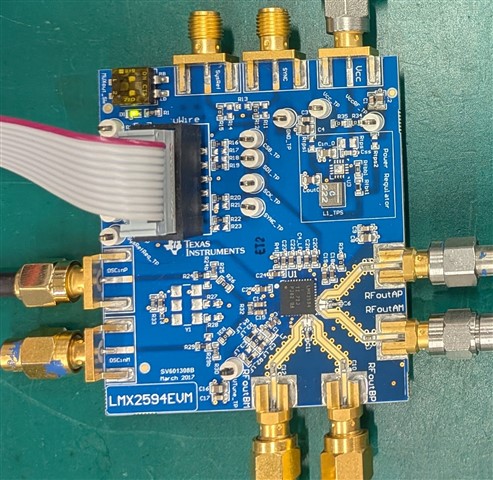Tool/software:
Hi support team all.
My customer is testing with LMX2594EVM.
Currently, Vco=14.4375 GHz, single end output of RF_AP only is -2dBm. (RF_AM is 50 ohm terminated.)
As there is no data available, could you please answer the following questions?
Regarding the output power graph (Fig19) in the data sheet of LMX2594, is this data obtained by EVM?
Also, is this the result of differential measurement?
-> If yes, is it correct to assume that it is about -3dbm at 14 GHz when measured at a single speed?
(Ta=25degC.)

Details of the data obtained by EVM are as follows.
|
Out Freq.[GHz] |
OUTx_PWR=50 |
OUTx_PWR=31 |
OUTx_PWR=15 |
|
3.35 |
8.57 |
8.36 |
4.66 |
|
3.61 |
8.3 |
8 |
4.8 |
|
13.4 |
-0.16 |
-0.2 |
-2.2 |
|
14.44 |
-2.2 |
-2.1 |
-3.15 |
Best regards,
DH



